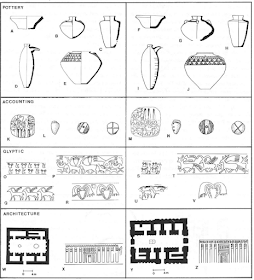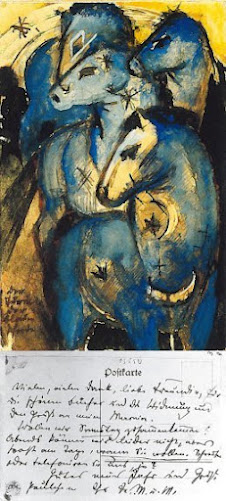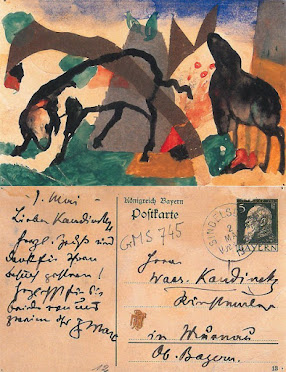Page from The Book of Taliesin
Taliesin was probably a real person who died around 575 AD. He was, according to our accounts, a famous bard who served British kings, notably the very historical Urien of Rheged.
Beyond that, everything we know about him is obscure, disputed, and based on sources that almost flaunt their unreliability. The Irish and Welsh had this annoying quirk in the way they recorded their history, which is that the more famous someone became, the less they cared about the reality of his life and the more they assimiliated him to various ancient myths. (See Arthur, Merlin)
Among the "sources" for the life of Taliesin is a peculiar manuscript, written down in the 1500s, called the Hanes Taliesin. This "biography" gives our bard multiple lives under multiple names. It attributes his great wisdom to his having spent time as a child in the home of the witch/goddess/hag/wise woman Ceridwen, who was brewing a potion of knowledge in the Cauldron of Wisdom. Taliesin was supposed to be tending the cauldron and not touching the brew, but three drops of the liquid fell onto his thumb, which he then stuck in his mouth because of the pain, thus acquiring all knowledge. Which is one of the oldest stories we know. So, yeah, a great source for Celtic myth but a lousy one for the life of the historical Taliesin.
One of the most important sources for the Welsh poetic tradition is a 14th century text called The Book of Taliesin. This contains 56 poems, of which about a dozen are agreed by authorities to date to the 500s AD and therefore may be connected with the historical Taliesin.
People have been obsessively reading these poems since the 1600s, seeking in them the key to Taliesin's history, Welsh myth, the Celtic Soul, the Secrets of the Druids, and so on. But that does not mean they agree on what they poems say.
The bards, according to our sources, composed their works in a state of ecstatic inspiration called in Welsh
awen. Awen was sometimes experienced while wandering the mountains, or in the midst of battle, but generally it happened when the bard fell into a deep sleep, or trance, from which he could not be woken until the right moment. Waking, he would have a poem ready to recite. He might freely confess that he himself did not fully understand his words; they came to him, not from him.
The bards pronounced various kinds of poems: poems of praise, genealogies, histories – presumably reciting these to various noble audiences was the main way they earned their keep – but also prophecy. The prophecies might not have been the most important works for the bards while they lived, but it was above all the prophecies that fascinated later generations. So most of the old bardic poetry that comes down to us has at least a hint of prophecy about it.
And you all know how prophecy works: the farther the bard looks ahead, the vaguer and more mystical the pronouncements become.
Plus, the bards practiced a deliberately obscure way of speaking, full of riddling references that only the most learned were supposed to get. We, sadly, are not among those initiates, so we are often left wondering what, exactly these phrases mean. One of my favorite old Welsh poems is The Colloquy of the Two Sages, in which a young bard challenges an older man for his place in court. They ask each other questions and then answer them in a way designed to show off their knowledge of the tradition, like this:
Old Sage: A question, lad; whence have you come?
Young Sage: Not a hard question!
From a confluence of wisdom,
From perfection of goodness,
From the brightness of the sunrise,
From the nine hazels of poetic art,
From splendid circuits, in a land
Where truth is measured by excellence,
Where there is no falsehood,
Where there are many colors,
Where poets are honored and well fed.
Which is supposed to convey that he was trained by a wise bard who served a great lord.
So, yeah, not a genre in which clarity of speech was much prized.
Anyway. This week I have been reading a book about Taliesin by the Welsh scholar/practicing druid John Matthews. I came across a passage from one of Taliesin's poems (i.e., one of the poems in the Book of Taliesin that the authorities agree date to the 6th century). As translated by D.W. Nash, this really caught my fancy:
Seven score muses
There are in the inspiration of song
Eight score in every score
In the great abyss of tranquility
In the depths below the earth
In the air above the earth
There is recognition of it
What sorrow there is,
That is better than joy.
Already having an inkling that translations of this stuff vary a lot, I went searching for other versions of this passage so as to better understand it and perhaps craft my own version.
In the first alternative translation I checked, I could not find this passage at all. I eventually decided that this must be an abridged version, although it didn't say so, and moved on. John Matthews has this:
Seven scores goddeses
have shares in inspiration,
but of these scores, only one truly.
Anger will cease in the depths,
in the depths anger will swell,
in the depths, under the earth,
in the sky over the earth,
only one truly knows
what is the sadness
that is better than joy.
Which is recognizably the same verse, although Nash has nothing about anger ceasing or swelling, or about only one of the however-many-score muses really mattering.
The Celtic Literature Collective has this:
Seven score Ogyrven
Are in the Awen.
Eight score, of every score it will be one.
In the deep it will cease from ire;
In the deep it will be excessively angry;
In the deep, below the earth;
In the sky, above the earth.
There is one that knows
What sadness is,
Better than joy.
I suppose Ogyrven is the word Nash translated "muses." Notice that here the subject of the discouse is the Awen (inspiration): it is the Awen that gets angry and then loses its anger, etc. The second sentence (Eight score, of every score it will be one) must be completely obscure, since the various translations don't agree at all. Otherwise I think we can get a sense of what this might mean, although I do wonder who is it who knows the kind of sadness that is better than joy. The poet? Or is the subject just missing, the way Nash has it? (You could do that in Welsh, as in Latin.)
So I went looking for other passages to see what sort of variation there was. Consider these, from a very famous (because very druidical) poem called The Battle of the Trees:
I have been in a multitude of shapes,
Before I assumed a consistent form.
I have been a sword, narrow, variegated,
I will believe when it is apparent.
I have been a tear in the air,
I have been the dullest of stars.
I have been a word among letters,
I have been a book in the origin.
I have been the light of lanterns,
A year and a half.
I was in many a guise
before I was disenchanted.
I am a grey-cowled minstrel,
I believe in illusion.
I was for a time in the sky:
I was observing the stars.
I was a message in writing:
I was a book to my priest.
I was the light of the altar-horns
for a year and a half.
I imagine the minstrel/sword problem means there is an unreadable word in the manuscript. But does the next line mean the speaker believes in illusions or not? Was he a star, or observing them? Matthews, incidentally, mostly agrees with the first translation above but he has "brightest of stars."
From The Spoils of Taliesin:
In manliness he will greet my trouble,
Should I be bled, I should evidently get better;
Truly I saw no one before, who saw not in me
Every indisposition, he will cultivate his business.
I saw a feeding about a lion for plants,
I saw leaves of luxuriant growth.
I saw a branch with equal blossoms.
Did I not see a prince?
My bravery emerges in time of stress:
If wounded, shall I recover strength altogether?
Verily I saw, before any, the oppression, which I did not escape.
Every feather-brain made my message of no account.
I saw a land, with pastures round the clearing and the court.
I saw a bird, which brings leaves from the deep.
I saw a branch, like thorns its blossoms.
This one puzzles me; were these two people reading the same poem?
Since nobody seems to agree on the details of these poems, I think I'll just render the passage I started from in my own way. How about this:
In the quiet of compassion
In the depths of anger
In the arc of the sky
The muses teach me
Of the sorrow that is
Better than joy.



.jpg)
-_Ausgrabungen_-_Annemarie_Schwarzenbach_-_SLA-Schwarzenbach-A-5-03-112.jpg)








_decorating_the_walls_of_a_temple_at_the_city_of_Warka_(Uruk),_Iraq._2nd_half_of_the_4th_millennium_BCE._Vorderasiatisches_Museum.jpg)































